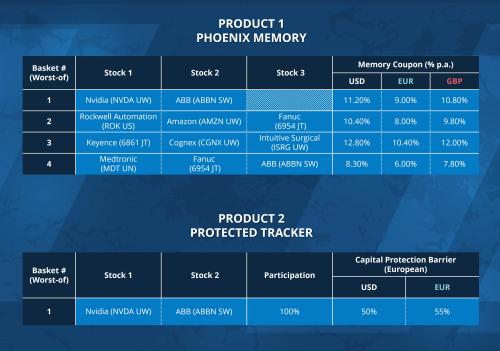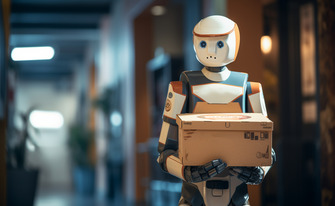News & Insights
Insights
Insights
Insights
July 4, 2025
Riding the Next Wave of E-commerce
Insights
June 25, 2025
When Waste Becomes an Opportunity
Insights
June 12, 2025
The Rise of Humanoids
1
2
3
Insights
June 12, 2025
A New Technological and Economic Frontier
The robotics industry is undergoing a profound transformation. Once confined to rigid, repetitive tasks on assembly lines, robots are now venturing into dynamic and human-centric environments, thanks largely to the rise of humanoid robots.
This shift has been made possible by the coming together of multiple breakthroughs: reduced actuator costs, sensor miniaturisation, explosive growth in embedded computing power, and most notably, advances in generative AI. These new machines are not only mobile and autonomous, but increasingly able to see, understand, and act in unstructured environments.
From Prototypes to Real-World Deployments
Companies like Tesla (Optimus), Figure AI, Sanctuary AI, and Agility Robotics are already testing humanoid robots in real-world environments including warehouses, retail stores, front desks and logistics. These bipedal machines, equipped with articulated arms and AI software, are targeting sectors under pressure, such as logistics, healthcare, and retail, where labour is scarce or experiences high turnover.
The global robotics market, currently worth around $45 billion (2024), could reach $150 billion by 2030. While humanoids remain a niche segment today, their adoption is expected to scale rapidly as costs drop and real-world use cases become more stable.
A New Kind of "Worker"?
Within five years, the total cost of ownership for a humanoid robot could fall below $40,000, making them cost-competitive with human labour in low-margin sectors. This could usher in a new category of automated labour, a “robot employee”; reliable, available 24/7, and without turnover.
Structural Tailwinds
Several structural trends are accelerating this shift. On the tech front, computer vision, language models (like GPT), and modular control systems have reached maturity. On the economic side, aging populations and persistent low-skill labour shortages are pushing companies to look for automated solutions.
Humanoid robots have the advantage of integrating directly into existing human environments, avoiding costly spatial redesigns.
Opportunities for Investors
Investors can tap into the humanoid robotics wave from several angles:
- Nvidia supplies the compute power (Jetson, Orin) and simulation tools (Omniverse Isaac Sim) powering next-gen robots
- ABB and Fanuc, established in industrial robotics, could pivot to more mobile, interactive solutions
- Amazon, already extensively robotised, is testing humanoids in its warehouses.
- Rockwell Automation, Keyence, and Cognex provide the critical sensors, vision systems, and automation software
- Intuitive Surgical and Medtronic, while focused on medical robotics, exemplify the potential of precision, human-interactive automation
A Structural Investment Theme
Humanoid robotics is no longer science fiction. Over the next decade, it could reshape entire sectors of the labour economy. With the potential to boost productivity, cut costs, and scale efficiently, the opportunity is real, but so are the technical, regulatory, and societal challenges.
For investors, this represents a mid- to long-term theme, best approached by backing tech leaders, critical component suppliers, and integrators ready to scale from prototype to production.
Product Snapshot
For informational purposes only. Not investment advice.

Insights
June 12, 2025
The Rise of Humanoids
A New Technological and Economic Frontier
The robotics industry is undergoing a profound transformation. Once confined to rigid, repetitive tasks on assembly lines, robots are now venturing into dynamic and human-centric environments, thanks largely to the rise of humanoid robots.
This shift has been made possible by the coming together of multiple breakthroughs: reduced actuator costs, sensor miniaturisation, explosive growth in embedded computing power, and most notably, advances in generative AI. These new machines are not only mobile and autonomous, but increasingly able to see, understand, and act in unstructured environments.
From Prototypes to Real-World Deployments
Companies like Tesla (Optimus), Figure AI, Sanctuary AI, and Agility Robotics are already testing humanoid robots in real-world environments including warehouses, retail stores, front desks and logistics. These bipedal machines, equipped with articulated arms and AI software, are targeting sectors under pressure, such as logistics, healthcare, and retail, where labour is scarce or experiences high turnover.
The global robotics market, currently worth around $45 billion (2024), could reach $150 billion by 2030. While humanoids remain a niche segment today, their adoption is expected to scale rapidly as costs drop and real-world use cases become more stable.
A New Kind of "Worker"?
Within five years, the total cost of ownership for a humanoid robot could fall below $40,000, making them cost-competitive with human labour in low-margin sectors. This could usher in a new category of automated labour, a “robot employee”; reliable, available 24/7, and without turnover.
Structural Tailwinds
Several structural trends are accelerating this shift. On the tech front, computer vision, language models (like GPT), and modular control systems have reached maturity. On the economic side, aging populations and persistent low-skill labour shortages are pushing companies to look for automated solutions.
Humanoid robots have the advantage of integrating directly into existing human environments, avoiding costly spatial redesigns.
Opportunities for Investors
Investors can tap into the humanoid robotics wave from several angles:
- Nvidia supplies the compute power (Jetson, Orin) and simulation tools (Omniverse Isaac Sim) powering next-gen robots
- ABB and Fanuc, established in industrial robotics, could pivot to more mobile, interactive solutions
- Amazon, already extensively robotised, is testing humanoids in its warehouses.
- Rockwell Automation, Keyence, and Cognex provide the critical sensors, vision systems, and automation software
- Intuitive Surgical and Medtronic, while focused on medical robotics, exemplify the potential of precision, human-interactive automation
A Structural Investment Theme
Humanoid robotics is no longer science fiction. Over the next decade, it could reshape entire sectors of the labour economy. With the potential to boost productivity, cut costs, and scale efficiently, the opportunity is real, but so are the technical, regulatory, and societal challenges.
For investors, this represents a mid- to long-term theme, best approached by backing tech leaders, critical component suppliers, and integrators ready to scale from prototype to production.
Product Snapshot
For informational purposes only. Not investment advice.

